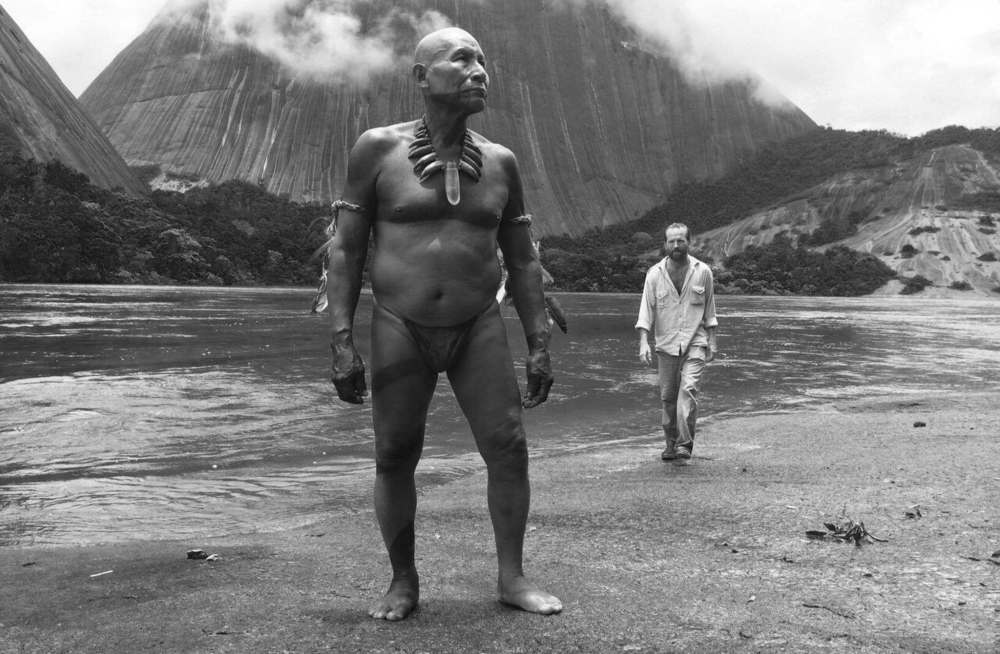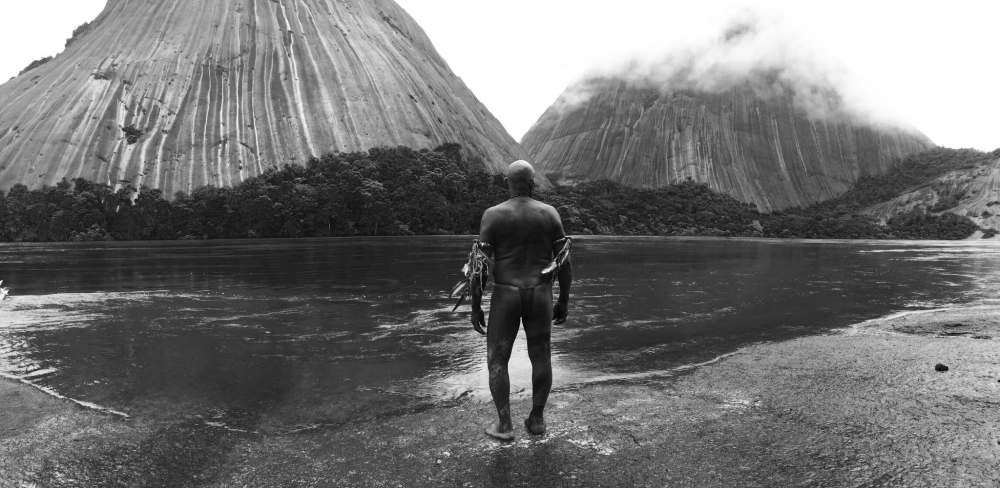Cultures clash in vibrant, hypnotic jungle
Advertisement
Read this article for free:
or
Already have an account? Log in here »
To continue reading, please subscribe:
Monthly Digital Subscription
$0 for the first 4 weeks*
- Enjoy unlimited reading on winnipegfreepress.com
- Read the E-Edition, our digital replica newspaper
- Access News Break, our award-winning app
- Play interactive puzzles
*No charge for 4 weeks then price increases to the regular rate of $19.95 plus GST every four weeks. Offer available to new and qualified returning subscribers only. Cancel any time.
Monthly Digital Subscription
$4.99/week*
- Enjoy unlimited reading on winnipegfreepress.com
- Read the E-Edition, our digital replica newspaper
- Access News Break, our award-winning app
- Play interactive puzzles
*Billed as $19.95 plus GST every four weeks. Cancel any time.
To continue reading, please subscribe:
Add Free Press access to your Brandon Sun subscription for only an additional
$1 for the first 4 weeks*
*Your next subscription payment will increase by $1.00 and you will be charged $16.99 plus GST for four weeks. After four weeks, your payment will increase to $23.99 plus GST every four weeks.
Read unlimited articles for free today:
or
Already have an account? Log in here »
Hey there, time traveller!
This article was published 31/03/2016 (3573 days ago), so information in it may no longer be current.
Shot in starkly beautiful black and white, this hypnotic drama is part history, part psychotropic trip. A Cannes sensation and Colombia’s first nomination for the Academy Awards’ best foreign language film category, Embrace of the Serpent explores the winding rivers of the Amazon basin and the dreams and visions of its inhabitants and travellers.
At some hushed, haunting point in this singular story, these external and internal worlds cannot be separated.
The film’s central subject is the encounter between European and indigenous cultures. (Languages spoken in this subtitled-polyglot project include Spanish, Portuguese, English, Catalan, German, Latin and Amazonian tribal dialects.) This is recognizable terrain, but Colombian director Ciro Guerra upends the standard orientation, which usually involves a white protagonist journeying into some existential heart of darkness while the aboriginal people around him are reduced to mute “exotic” background.

Here, the pivotal character is Karamakate, a shaman who lives alone in the jungle, believing he is the last of his people. Played as a young man by Nilbio Torres and as an old man by Antonio Bolivar, both versions are potent, tragic and burning with screen presence.
Karamakate is approached in 1909 by a sunken-eyed German ethnographer Theo (Jan Bijvoet) who is shaking with sickness and seeking a cure. More than three decades later, Karamakate meets an American ethnobotanist Evan (Brionne Davis). Both men — loosely based on real-life explorer-scientists Theodor Koch-Grunberg and Richard Evans Schultes — want the shaman to guide them upriver in search of a sacred plant, the mythical (and heavily symbolic) yakruna.
These two journeys, separated in time, wind over and under each other like the snakes seen in the film’s opening passage.
Karamakate is wary — with good reason — of what he calls the white men’s “mandates.” Guerra is unsparing about the depredations of colonialism but his denunciations come through complex characters with complicated motivations.
Theo and Evan both have good intentions: to document a world still largely unknown beyond the Amazon. Both are involved — often without realizing it — in unequal exchanges of goods, knowledge and trust. At one point, Evan offers Karamakate money for his services; Karamakate tells him he doesn’t like money. “It tastes bad,” he says, with weary scorn.
One river stop involves a nightmarish glimpse of the rubber trade, a hellish landscape of human suffering and ecological disaster.

Another detour reveals the damage done in the name of institutional religion. Karamakate and Theo stop at a Catholic mission where a lone priest, increasingly unbalanced and paranoid, whips boys to rid them of what he calls “cannibalism and ignorance.”
Three decades later, Karamakate returns to the mission, this time with Evan, and those same boys have grown into the self-flagellating members of a bizarre and brutal messianic cult.
There are sequences that call up Werner Herzog’s Aguirre, the Wrath of God and Francis Ford Coppola’s Apocalypse Now. Embrace of the Serpent isn’t as aggressively ambitious as those works, and there are moments when it veers toward New Age vagueness. (A sequence in which the black-and-white movie suddenly bursts into psychedelic colour will either blow your mind or leave you cold.)
But, ultimately, the story’s power is grounded in the intensity and commitment of the filmmaking, in the sparse dialogue, scrupulous detail and almost somnolent pacing — not to mention the constant thrumming undertone of anger.
Karamakate worries the world will forget how to see and hear. This lucid, original and unsettling cinematic dream offers a way to remember.

alison.gillmor@freepress.mb.ca

Studying at the University of Winnipeg and later Toronto’s York University, Alison Gillmor planned to become an art historian. She ended up catching the journalism bug when she started as visual arts reviewer at the Winnipeg Free Press in 1992.
Our newsroom depends on a growing audience of readers to power our journalism. If you are not a paid reader, please consider becoming a subscriber.
Our newsroom depends on its audience of readers to power our journalism. Thank you for your support.

